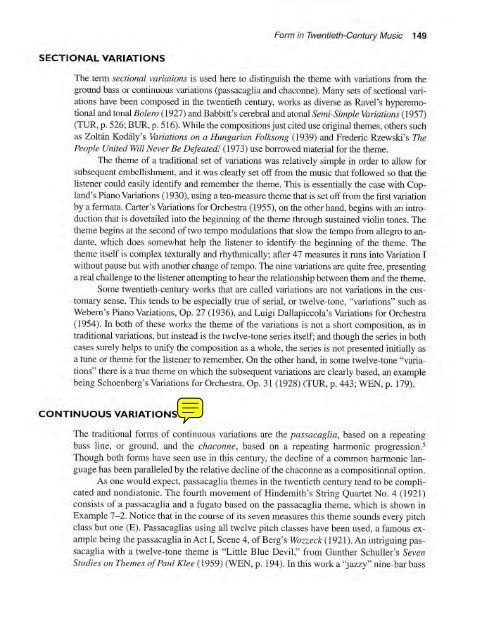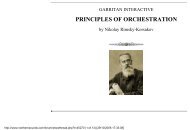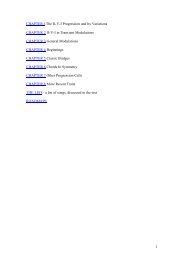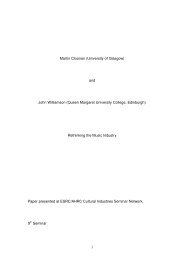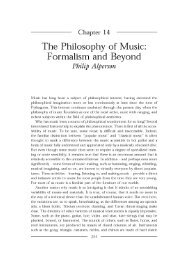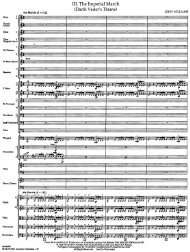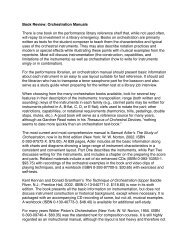TWENTIETH- - Synapse Music
TWENTIETH- - Synapse Music
TWENTIETH- - Synapse Music
Create successful ePaper yourself
Turn your PDF publications into a flip-book with our unique Google optimized e-Paper software.
SECTIONAL VARIATIONS<br />
Form in Twentieth-Century <strong>Music</strong> 149<br />
The tenn sectional variations is used here to distinguish the theme with variations from the<br />
ground bass or continuous variations (passacaglia and chaconne), Many sets of sectional variations<br />
have been composed in the twentieth century, works as diverse as Ravel's hyperemotional<br />
and lonal Bolero (1927) and Babbitt's cerebral and alonal Semi-Simple Variations (1957 )<br />
(TUR, p. 526; BUR, p. 5 16). While the compositions just cited use original themes, others such<br />
a. Zoltlin Kodaly's Variations on a Hungarian Folksong (1939) and Frederic Rzewski's The<br />
People United Will Never Be Defeated! (1973) use borrowed material for the theme.<br />
The theme of a traditional set of variations was relatively simple in order to allow for<br />
subsequent embellishment, and it was clearly set off from the music that followed so that the<br />
listener could easily identify and remember the theme. This is essentially the case with Copland's<br />
Piano Variations (1930), using a ten-measure theme that is set off from the first variation<br />
by a fermata. Carter's Variations for Orchestra (1955), on the other hand, begins wilh an introduction<br />
that is dovetailed into (he beginning of the theme through sustained violin tones. The<br />
theme begins at the second of two tempo modulations that slow the tempo from allegro to andante,<br />
which does somewhat help the listener to identify the beginning of the theme. The<br />
theme itself is complex texturally and rhythmically; after 47 measures it runs into Variation I<br />
without pause bUl with another change of tempo. The nine variations are quite free, presenting<br />
a real challenge to the listener attempting to hear the relationship between them and the theme.<br />
Some twentieth-century works that are called variations are not variations in the customary<br />
sense. This tcnds to be especially true of serial, or twelve-tone, "variations" such as<br />
Webem 's Piano Variations, Op. 27 (1936), and Luigi Dallapiccola's Variations for Orchestra<br />
(1954). In both of these works the theme of the variations is not a short composition, as in<br />
traditional variations, but instead is the twelve-tone series itself; and though the series in both<br />
cases surely helps to unify the composition as a whole, the series is not presented irutially as<br />
a tune or theme for the listener to remember. On the other hand, in some twelve-tone "variations"<br />
there is a true theme on which the subsequent variations are clearly based, an example<br />
being Schoenberg's Variations for Orchestra, Op. 31 (1928) (TUR, p. 443; WEN, p. 179).<br />
CONTINUOUS VARIATIONS<br />
The traditional forms of continuous variations are the passacaglia, based on a repeating<br />
bass line, or ground, and the cliacoflne, based on a repeating harmonic progression. 5<br />
Though both form s have seen use in this century, the decline of a common harmonic language<br />
has been paralleled by the relative decline of the chaconne as a compositional option.<br />
As one would expect, passacaglia themes in the twentieth century tend to be complicated<br />
and nondiatonic. The fourth move ment of Hindemith's String Quartet No.4 ( 1921)<br />
consists of a passacaglia and a fu gato based on the passacaglia theme, which is shown in<br />
Example 7- 2, Notice that in the course of its seven measures thi s theme sounds every pitch<br />
class but one (E). Passacaglias using all twelve pitch classes have been used, a famou s example<br />
being the passacaglia in Aet J, Seene 4, of Berg's Wozzeck (1921). An intriguing passacaglia<br />
with a twelve-tone theme is "Little Blue Devil ," from Gunther Schuller's Seven<br />
Studies on Themes of Paul Klee ( 1959) (WEN, p. 194). In this work a "jazzy" ni ne-bar bass


